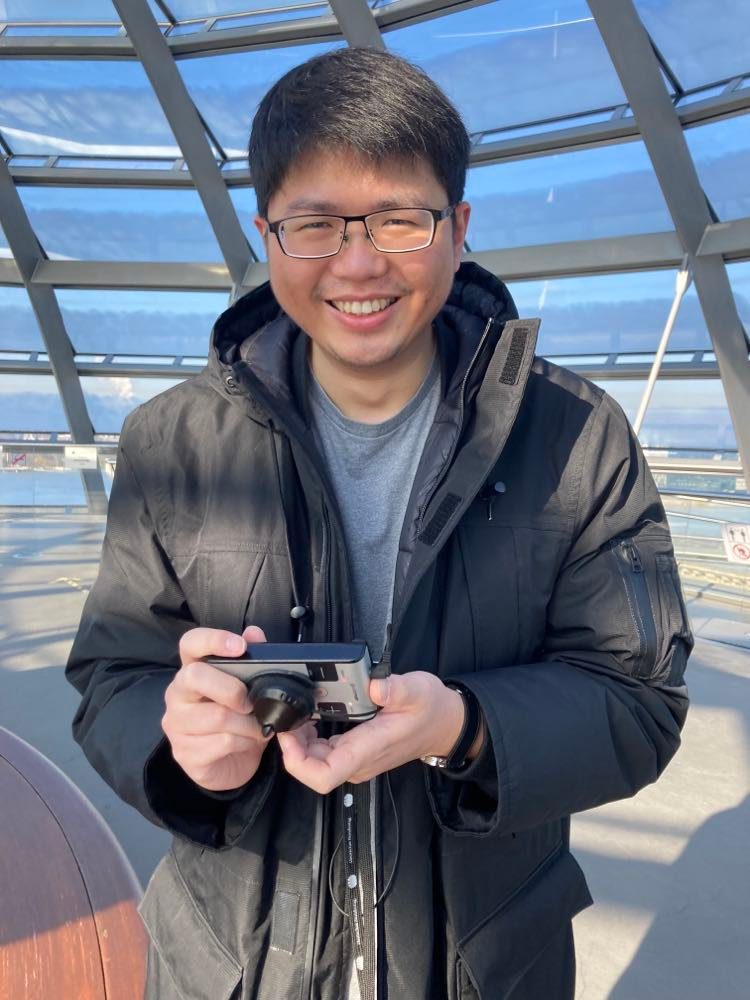
Visiting Assistant Professor
University of California, Irvine
Department of Mathematics
340 Rowland Hall
Irvine, CA 92697-3875
Office: 410P
Email: shihkaic@uci.edu

Visiting Assistant Professor
University of California, Irvine
Department of Mathematics
340 Rowland Hall
Irvine, CA 92697-3875
Office: 410P
Email: shihkaic@uci.edu
Since Winter 2025, I have been a Visiting Assistant Professor at University of California, Irvine, where my mentor is Xiangwen Zhang. During Fall 2024, I was a Postdoc at the SLMath (formerly MSRI) under the program Special Geometric Structures and Analysis, where my mentor was Mark Haskins.
In the academic year 2023–2024, I was a Postdoctoral Scholar at Vanderbilt University, mentored by Ioana Suvaina. From 2021 to 2023, I was a Postdoctoral Research Associate in Special Holonomy at the University of Oxford, where my mentor was Jason D. Lotay.
I received my PhD in Mathematics in August 2021 from the University of Notre Dame, under the supervision of Gábor Székelyhidi. I am interested in geometric analysis and complex differential geometry, as well as related areas.
My research interests lie in Kähler geometry, manifolds with special holonomy, and calibrated geometry, with a particular focus on Calabi–Yau manifolds and special Lagrangian submanifolds.
Calabi–Yau manifolds play a central role in both mathematics and physics. Many important phenomena were first observed in this setting before generalizing more broadly. I have worked on existence and classification results for singular Kähler–Einstein metrics and Calabi-Yau metrics with maximal volume growth.
Special Lagrangian submanifolds are half-dimensional, volume-minimizing Lagrangian submanifolds in Calabi–Yau manifolds. In string theory, they arise as boundary conditions for open strings, and counting them is expected to yield invariants of the ambient Calabi–Yau manifold. These special submanifolds are difficult to construct in the compact setting. I have recently constructed new examples in certain compact Calabi–Yau 3-folds.
In certain extreme situations, the geometry of compact Calabi-Yau manifolds can be understood through singular Kähler–Einstein metrics and Calabi–Yau metrics with maximal volume growth. This perspective informs the study of special Lagrangian geometry, and my two research directions merge in this interplay. A long-term goal, however, is to understand Calabi–Yau manifolds and special Lagrangian submanifolds in generic regions of their moduli spaces.
More recently, I have also become interested in G2 geometry and gauge theory.
We show that any locally planar tropical curve \(\Gamma\) in \(\mathbb{R}^n\) (with unit edge weights) can be realized as the limit of the rescaled moment map images of a family of special Lagrangian submanifolds in \(T^*T^n\) with respect to the Euclidean structure. This is based on a gluing construction that matches special Lagrangian local models to the combinatorics of \(\Gamma\), thereby establishing a direct link between tropical geometry and special Lagrangian geometry.
We show that a general class of singular Kähler metrics with Ricci curvature bounded below define Kähler currents. In particular the result applies to singular Kähler–Einstein metrics on klt pairs, and an analogous result holds for Kähler–Ricci solitons. In addition we show that if a singular Kähler–Einstein metric can be approximated by smooth metrics on a resolution whose Ricci curvature has negative part that is bounded uniformly in \(L^p\) for \(p>\frac{2n-1}{n}\), then the metric defines an RCD space.
We construct special Lagrangian submanifolds in collapsing Calabi–Yau 3-folds fibered by K3 surfaces. As these 3-folds collapse, the special Lagrangians shrink to 1-dimensional graphs in the base, mirroring the conjectured tropicalization of holomorphic curves in collapsing SYZ torus-fibered Calabi–Yau manifolds. This confirms predictions of Donaldson and Donaldson–Scaduto in the Calabi–Yau setting. Additionally, we discuss our results in the contexts of the Thomas–Yau conjecture, the Donaldson–Scaduto conjecture, and mirror symmetry.
We construct a family of inequivalent Calabi–Yau metrics on \(\mathbf{C}^3\) asymptotic to \(\mathbf{C} \times A_2\) at infinity, in the sense that any two of these metrics cannot be related by a scaling and a biholomorphism. This provides the first example of families of Calabi–Yau metrics asymptotic to a fixed tangent cone at infinity, while keeping the underlying complex structure fixed. We propose a refinement of a conjecture of Székelyhidi addressing the classification of such metrics.
We study singular Kähler–Einstein metrics that are obtained as non-collapsed limits of polarized Kähler–Einstein manifolds. Our main result is that if the metric tangent cone at a point is locally isomorphic to the germ of the singularity, then the metric converges to the metric on its tangent cone at a polynomial rate on the level of Kähler potentials. When the tangent cone at the point has a smooth cross section, then the result implies polynomial convergence of the metric in the usual sense, generalizing a result due to Hein-Sun. We show that a similar result holds even in certain cases where the tangent cone is not locally isomorphic to the germ of the singularity. Finally we prove a rigidity result for complete \(\partial\bar\partial\)-exact Calabi–Yau metrics with maximal volume growth. This generalizes a result of Conlon–Hein, which applies to the case of asymptotically conical manifolds.
We prove that on a complete Calabi–Yau manifold \(M\) with Euclidean volume growth, a harmonic function with subquadratic polynomial growth is the real part of a holomorphic function. This generalizes a result of Conlon–Hein. We prove this result by proving a Liouville type theorem for harmonic \(1\)-forms, which follows from a new local \(L^2\) estimate of the differential.
Co-organized the sessions Hermitian Yang-Mills Connections and Stability in Kähler Geometry.
Michaelmas 2021–Trinity 2023. Co-organized with Guillem Cazassus, Ilyas Khan, and Henry Liu.
Student geometry seminar held in Fall 2020 (covid days) with a focus on talking about our own research.